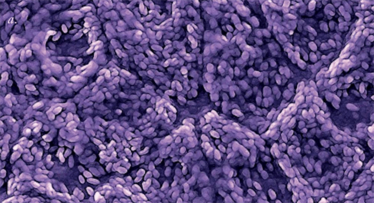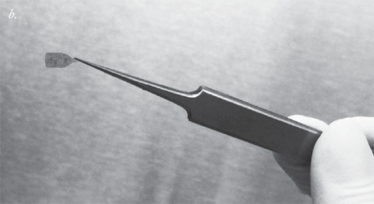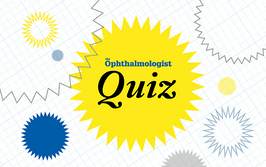March 2018: the news broke that two patients with severe wet AMD gained vision following implantation of a retinal pigment epithelium (RPE) patch derived from human embryonic stem cells (hESCs) (1).
April 2018: a collaborative team from USC Roski Eye Institute and other institutions in California, USA, publish Phase I clinical study results showing safety and functionality of their bioengineered RPE implant in patients with advanced dry AMD (2).


Figure 1. Scanning electron microscope image of hESC-derived RPE (a) and image of the CPCB-RPE1 implant (b). The implant is comprised of a polarized monolayer of RPE on an ultrathin Parylene substrate that is designed to mimic Bruch’s membrane. Credit: USC Roski Eye Institute (a) and Britney O Pennington (b).
“So many people suffer severe vision loss due to advanced dry AMD; it is estimated that almost 3 million people in the US will suffer from the condition by 2020,” says Amir Kashani, lead author on the associated paper (2). As no treatment currently exists, the group were inspired to develop an approach to treat geographic atrophy (GA) – one of the main causes of vision loss in dry AMD. Their implant, named the California Project to Cure Blindness-Retinal Pigment Epithelium 1 (CPCB-RPE1), comprises a polarized monolayer of hESC-derived RPE on a Parylene substrate (Figure 1). After subretinal implantation into the area of GA in four patients, CPCB-RPE1 showed a stable integration with overlying retinal tissue, and there were no reported safety concerns (mean follow-up, 260 days). Three of the four patients maintained vision throughout follow-up, with one patient sustaining a gain of 17 letter gains from day 60, and two patients showing improved fixation.
Kashani says their work has the potential to address a major unmet medical need – the treatment of advanced dry AMD. “To be able to prevent or reverse vision loss in this population would have a major public health benefit and improve the lives of millions,” he says. What’s next? “These results are very encouraging and we plan to finish enrollment of about 20 patients to fully demonstrate the safety of the implant, as well as better understand its potential efficacy,” says Kashani. “This will help us plan for the next trial in a larger cohort of patients.” Could a new generation of AMD treatments be on the horizon?
- L da Cruz et al., “Phase 1 clinical study of an embryonic stem cell–derived retinal pigment epithelium patch in age-related macular degeneration”, Nature Biotechnology, 36, 328–337 (2018). PMID: 29553577.
- AH Kashani et al., “A bioengineered retinal pigment epithelial monolayer for advanced, dry age-related macular degeneration”, Sci Transl Med, 10 (2018). PMID: 29618560.













